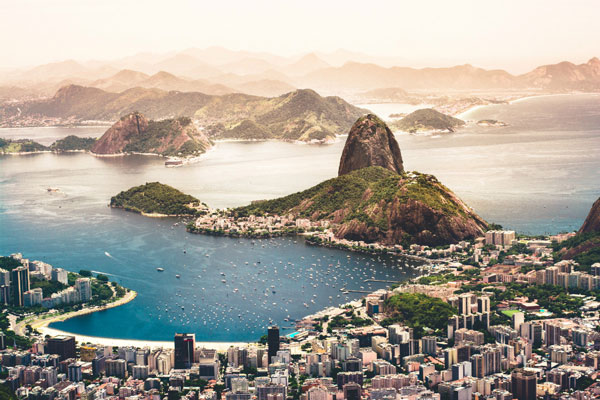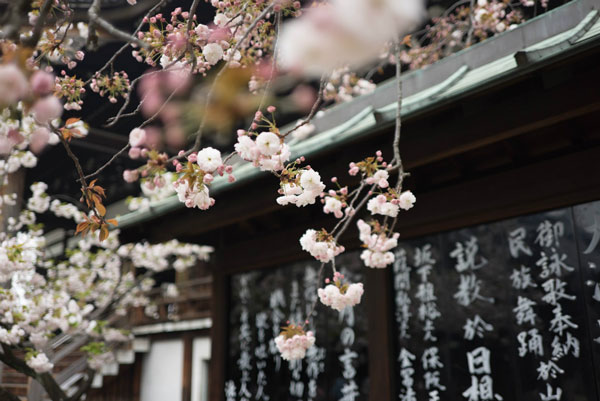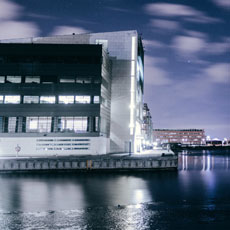
With the worldwide drive for sustainability gaining steam and more people pushing for sustainability in their everyday lives, cities around the globe are taking part in the movement.
It's difficult though to measure how sustainable a city really is. There are obvious aspects, such as recycling and clean emissions, but some issues are less straightforward, such as livability or citizen involvement.
And it’s not enough for cities to build eco-friendly buildings; people need to be actively working to reduce their carbon footprints.
The Arcadis Sustainable Cities Index ranks a city's sustainability using three factors:
- People. The quality of life in the city, how happy and healthy the people are, and what sort of educational and medical resources are available.
- Planet. This is the green factors section: energy consumption, emissions, air quality, etc.
- Profit. This measures the economic health of a city — the traffic infrastructure, the ease of doing business in the city, amount of tourism and GDP per capita.
Hundreds of cities are contenders in this competition, and many are making leaps and bounds in the field. But which cities are showcasing brilliant new techniques and embodying what it means to be sustainable?
These 10 cities below deserve special recognition because they are giving life to creative breakthroughs in both sustainable building and living.
1. Bogotá, Colombia
Once known for drug trafficking and gangs, Colombia has been working hard to reform its image by investing heavily in cities’ sustainability. Bogotá is leading the way with its approach to urban transportation.
Enrique Peñalosa, elected mayor of Bogota in 1998, was the initial driving force behind these changes. Now, Bogota has more bike paths than almost any city in the world — in excess of 180 miles — and its Bus Rapid Transit system is spectacular.
City officials have also put a cap on the number of cars allowed in the city, cutting traffic and car emissions. They have served as an inspiration for many other cities. In 2008, New York held its own first annual Ciclovia, car-free Sundays (and holidays), closing down a stretch of road connecting the Brooklyn Bridge to Central Park and giving free reign to pedestrians and cyclists. This was implemented after Janettte Sadik-Khan, New York City’s Commissioner of Transport, went to Bogota and saw the extensive bike network there.
Bogota also hosts the world's largest vertical garden on the Santalaia building, designed and installed by Groncol using a special technique called the F+P system that grows plants using hydroponics. “A vertical garden of this size can produce enough oxygen for more than 3,100 people every year, process 1,708 pounds of heavy metals, filter more than 2,000 tons of harmful gases and catch more than 881 pounds of dust,” Inhabitat writes.
2. Copenhagen, Denmark
Copenhagen sets a high bar for sustainability already: At least 36 percent of the city’s inhabitants cycle to work. Copenhagen is also known for its carbon measurement and regulation, with a goal of becoming CO2-neutral by 2025.
Danish architects 3XN recently built the UN City complex building, the first UN building to receive LEED Platinum certification. Located on the harbor, the building uses natural resources from its environment to function — including solar panels for energy, captured rainwater for the bathrooms and plumbing, and seawater for its cooling system.
Copenhagen also aims to be people-friendly by promoting health and happiness among its inhabitants. They have recently cleaned the harbor pollution so that people can safely go swimming. The Crowne Plaza Copenhagen Towers hotel, while already boasting many energy-saving designs, takes it a step further, allowing guests to get a free meal in return for cycling on stationary bikes, which power the hotel.

3. Rio de Janeiro, Brazil
Brazil recently passed the Solid Waste Policy, and many organizations, such as Recicladora Urbana and Sinctronics, are focusing on digital recycling as a result.
These policies give people a safe way of either disposing of electronic devices such as phones and computers or refurbishing them for reuse. Digital recycling is still a largely untapped market, but it is indispensable for sustainability, especially for a country like Brazil, which produces 9 percent of the world's e-waste.
An organization called WiseWaste gets the public involved by allowing them to report illegal waste dumps in real time using an app.
Rio, with its favelas, is not typically a city that comes to mind when discussing sustainability, but a program called Morar Carioca is helping weave each shantytown into the fabric of the city. Jorge Ponte, the architect heading the project, hopes to achieve integration by extending public services including sanitation to the areas, and by improving and rebuilding housing and infrastructure.
One Rio favela, Vale Encantado, has turned its neighborhood around with the Vale Encantado Cooperative, founded by Otávio Barros with the help of Jerome Auriac, founder of ABAQUAR Paris. The cooperative has begun using the area for ecotourism, providing employment to the families in the area while promoting sustainability and protecting the environment.
4. Singapore
Singapore is, without a doubt, one of the leading cities in sustainability, with innovative water management, an excellent public transport system, and an ongoing push to build and maintain green spaces.
The city hosts International Water Week every year, an event designed to showcase innovation in water management. Last year's winner of the event’s top award, John Anthony Cherry, was recognized for his research in hydrogeology, or groundwater, which accounts for 95 percent of the world’s usable water.
Known as The Garden City, Singapore has been working hard to maintain this title and continues to look for new and creative ways to incorporate greenery into the city.
The CapitaGreen building, designed by architect Toyo Ito, is one such example. Ito took advantage of the higher wind speeds at the top, designing a flower-like structure whose petals channel cool air into the open-air center of the building, saving on cooling costs.
Ito says the building is “like a big tree in the city that is breathing."
“Singapore used to be covered in forests, but as the city developed, all the greenery had been lost,” Ito says. “With a skyscraper, we can do vertical greenery instead.”
5. Melbourne, Australia
Melbourne is, like many cities in Australia, earning high scores for sustainability. What makes Melbourne interesting is how invested its citizens are in making the city even more sustainable.
According to Emmer Telfer, creative director of Open House Melbourne: “In the last few years we’ve seen a real increase in general public engagement with ideas around city development and urban-planning initiatives. Melburnians really engage with the way the city is developing.”
The Melbourne Sustainable Society Institute is another organization working to educate the public on sustainability, recognizing the significant role that citizens play in a city's progress toward being sustainable.
Melbourne is also beginning to implement urban forests into its planning strategy, aiming to double the city’s canopy cover from 20 percent to 40 percent by 2040. Arron Wood, head of the Melbourne council's environment portfolio, says urban forests have the potential to reduce the severity of heatwaves — useful for a city where temperatures often exceed 100 degrees in the summer.

6. Tokyo
While Tokyo has been a player in the sustainability game for quite some time, being named host of the 2020 Olympic Games has given this city added motivation to reform.
In 2010, Tokyo launched the world's first cap and trade program, which in its first three years cut emissions by 13 percent and prevented the release of more than 7 million tons of CO2.
Tokyo is clean and crime rates are low, but what makes Tokyo truly special is the brilliant mix of modern and traditional seen throughout the city. As Kengo Kuma, the architect of the 2020 Tokyo Olympic Stadium, says: “What makes it unique is the clear contrast of townscape in Tokyo, where narrow passages among old wooden houses still exist along with big roads and buildings constructed in the 20th century.”
In keeping with this idea, Kuma has designed the stadium in a blend of new and old — light and airy in the Japanese style and made of wood, with prefabricated panels strategically placed to minimize heating and cooling costs.
7. Toronto
A diverse and international city, Toronto is consistently ranked as one of the top cities to live in.
It's no surprise that it is also transforming into an eco-friendly and sustainable one, taking extensive measures to transform rundown areas and integrate green space into city life.
Case in point: The Waterfront Toronto project, a public agency focused on developing hundreds of acres of neglected waterfront land — with projects headed by Diamond Schmitt, KPMB and Moshe Safdie.
Construction to build a park under the expressway that cuts through the waterfront marks a shift from car-oriented transport to cyclist- and pedestrian-friendly roadways. The city is trying to design new spaces in this light, such as the Snøhetta-designed student learning center at Ryerson University, with wide seating areas that link to the street.
According to Jennifer Keesmaat, Toronto’s chief planner, “The design of that building is about lingering [and] recognizing that public life takes place on our streets.”
8. Portland, Oregon
Portland is the poster child for a sustainable city, known for being environmentally conscious with residents who love local organic produce, recycling and biking to work. Hipsters are really sustainable, it turns out.
Portland is working hard on every front to cut emissions 80 percent by 2050. The city’s efforts have also found that sustainability reduces the business costs, creates more livable and equitable neighborhoods, and increases the number of green jobs.
Hopworks Urban Brewery and Hot Lips Pizza are two restaurants that are locally owned, operated and sourced, but the list of such restaurants in Portland is long and growing. Bella Organic is an organic pumpkin patch and winery that sells to the public and restaurants alike, promoting organic farming and local sourcing.
Green Hammer, an architecture company that specializes in environmentally conscious building, completed the Ankeny Row townhouses in 2015, which within a year of opening were producing more electricity than they used.
What makes Portland special is how people embrace sustainable lifestyles. More than just the city planners implementing these changes, the people of Portland take an active role in sustainability; it is woven into the fabric of the city.
The Full Plane Passive house is an excellent example of this mindset. Designed by Michelle Jeresek and built by James Arnold, the Full Plane Passive House was built as a net-zero water and net-zero energy home because the owner wanted her son to grow up learning about sustainable living.

9. Bristol, UK
In 2008, a 10-year plan was launched to make the Bristol area the most sustainable city-region in the UK. The program focuses on decreasing emissions from vehicles and getting the people who live there to choose walking over driving.
“Ditching the car for short journeys has always made sense, both for the wallet and personal health,” Jonathon Porritt, the founder of Sustainable Bristol, says. “Now that we know what kinds of carbon savings we need to make, there’s even more reason to follow our instincts.”
And there’s an app for that. Walkit.com, an urban walking route planner, encourages people to walk by showing them the journey distance, walking time (according to a slow, medium or fast walking pace), the number of calories expended, and the amount of carbon dioxide saved by not going by car, taxi or bus.
10. Detroit
Detroit doesn’t have a lot of money to put toward revitalizing all of its neglected areas. Therefore it sets aside areas where normal development rules don’t apply.
To try to reduce obstacles, such as Detroit’s onerous and outdated rules, without a time-consuming and expensive rezoning process, the city is proposing a handful of “pink zones,” where red tape will be cut to help small developers and entrepreneurs open new businesses and revive aging commercial strips.
In order to help this process, the city planning department intends to recruit designers and planners to come up with a general framework for anyone who wants to start a new business or build in those areas, using a $75,000 grant from the John S. and James L. Knight Foundation.
What The Future Holds
When it comes to sustainability, the cities that are really going to excel are the ones whose residents lead sustainable lifestyles. Organizations will promote sustainability and provide green education while caring for inhabitants and their quality of life.
As Melbourne's lord mayor, Robert Doyle, says: “Empowering citizens to participate is not only the smart thing to do — it’s the right thing to do. People need to know what their role in the consultation and engagement is.”
Credits:
Sandro KatalinaAgustín Diaz
Galen Crout
Larisa Mamonova

